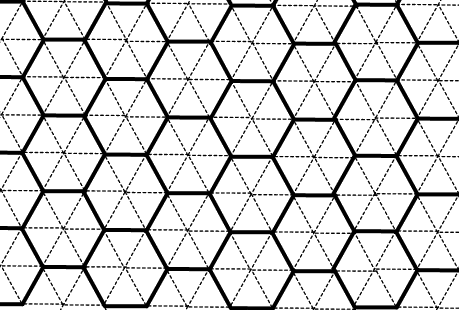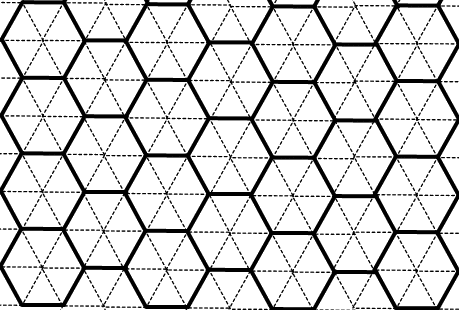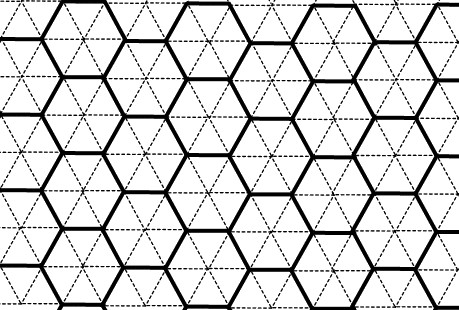The partitioning cycle
This partitioning scheme uses three different partitions (at different times) - I call it a three-stage neighbourhood. It is the Margolus-style equivalent of the Star of David neighbourhood. It is very much like the Q*Bert neighbourhood - with an additional third partition. For programmable, non-uniform automata, a typical implementation would require three-times as much LUT as one using the Star of David neighbourhood. It also uses different partitions at different times. These factors won't lead to a compact representation in hardware. It has a virtue compared to the Star of David neighbourhood, though - namely the greatest distance from a point in the domain to a point in the range is smaller. This factor could translate into faster update times.
|


